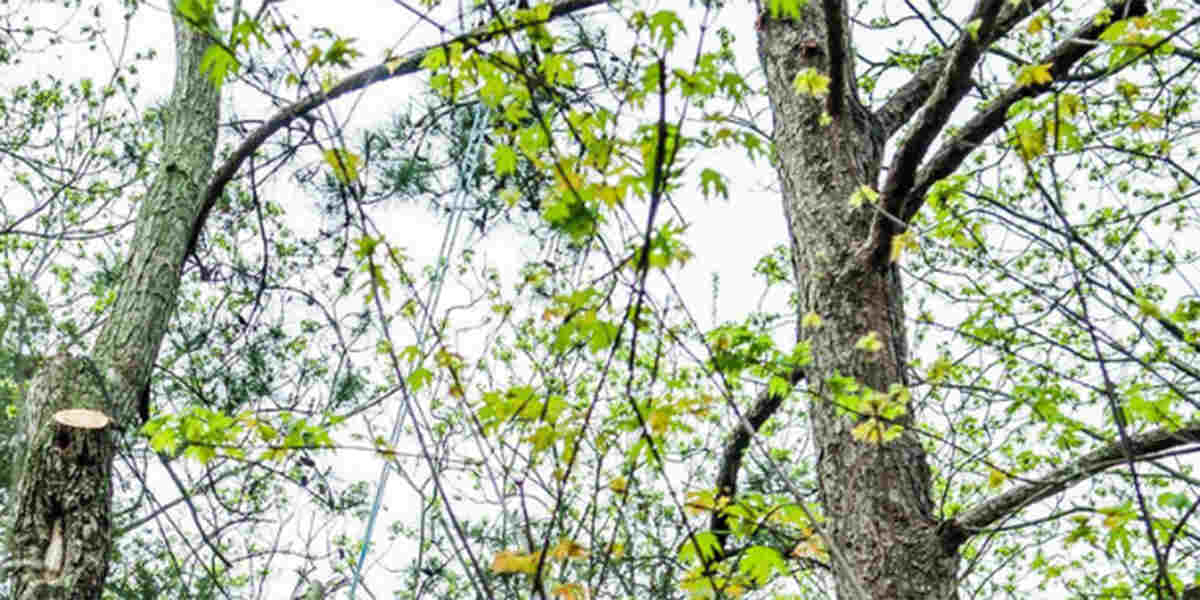Your tree’s foliage, once a verdant symphony of green, now parades a somber yellow — a clear sign it may have chlorosis. This condition, while not deadly, can leave your specimen vulnerable to various other issues and impact your landscape’s overall aesthetics.
As Chapel Hill’s reliable tree service, we at J&D Tree Pros, Inc. have battled chlorosis in trees and emerged victorious time and time again. Keep reading as we uncover the best solutions to keep your landscape thriving.

Chlorosis and Its Causes
Chlorosis is a condition where your tree lacks chlorophyll, the green substance that turns sunlight into sustenance. As a result, the leaves will slowly lose their lush hue and, instead, don a lackluster yellow or whitish tone. Sometimes, they may even show an unusual pattern of dark green veins against the pale backdrop.
Iron deficiency from low oxygen and high pH levels in the soil is often the primary culprit behind chlorosis. Common causes include:
- Overwatering
- Overfertilizing
- Soil compaction
- Herbicide damage
- A symptom of disease, and in severe cases, neglected chlorosis leads to tree collapse due to overall health deterioration.
Treating Chlorosis
Iron chlorosis in trees, while visually disheartening, doesn’t spell immediate doom for your specimen. These remedies can restore its vim and vigor:
Soil Application
Applying a mixture of equal parts iron sulfate and elemental sulfur can balance soil pH and replenish iron reserves. Make small holes (about one to two inches in diameter and 12 to 18 inches deep) around the tree’s drip line, spaced 18 to 24 inches apart, then fill each one with the mixture.
The number of holes and amount of mixture required depends on the trunk diameter:
- One inch: Four holes filled with half a pound of the amendment
- Two inches: Six holes filled with one to two pounds
- Four inches: Eight holes filled with three to six pounds
- Eight inches: 16 to 24 holes filled 12 to 16 pounds
Foliage Spray
If you need your trees to look their best for an upcoming event, a chelated iron spray is your go-to quick fix. Strategically apply the product, focusing on the undersides of the leaves where the stomata, tiny little openings for gas exchange, are most concentrated. Keep in mind that it’s only a temporary solution, and some areas may still show yellowing.
Avoid the Hassle With Prevention
The best way to never deal with chlorosis is to plant the appropriate species for your soil type and conditions. Certain varieties are more prone to the condition, such as pin oaks, silver maples, and sweetgums. If your yard has alkaline soil, consider planting trees that can withstand such conditions like boxelders, elms, or ash.
Test your soil or consult an arborist so you can make a better-informed decision!
Consult a Local Expert
Seeing your favorite specimen struggling is a disheartening sight for any gardening enthusiast. Why not give it the best chance at survival by partnering with professionals?
At J&D Tree Pros, Inc., we know how to cure chlorosis in trees and keep trees healthy and looking beautiful. Call us at (919) 467-7997 today.
